Are you looking to ensure your mobile device meets industry standards and performs reliably across various networks? Cellular testing is essential for achieving interoperability, network compatibility, and regulatory compliance. 360Compliance offers expert cellular certification services to guide you through this complex process, ensuring your device meets all necessary requirements for a smooth market entry.
What Is Cellular Certification?
Cellular certification refers to the process by which mobile devices and related technologies undergo testing and validation to ensure compliance with industry standards and regulatory requirements. As the mobile landscape continues to evolve rapidly, with the advent of new technologies and the ongoing deployment of advanced wireless networks, cellular certification becomes increasingly crucial. This certification process helps guarantee the interoperability, security, and performance of mobile devices and networks, fostering a seamless and reliable user experience.
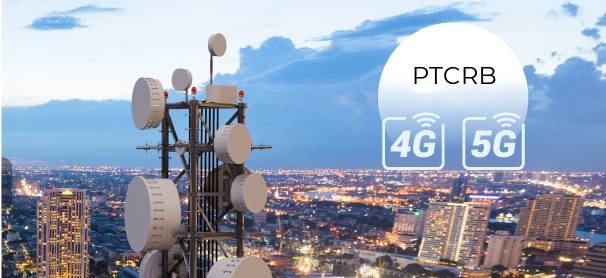
PTCRB Certification
Are you aiming to ensure your cellular devices meet industry standards and are ready for the US market? PTCRB Certification, established by the PCS Type Certification Review Board, is essential for manufacturers of mobile devices such as smartphones, feature phones, and IoT devices. This certification ensures that your products comply with wireless equipment standards, providing seamless interoperability and reliable performance. At 360Compliance, we specialize in guiding you through the PTCRB certification process, ensuring your devices meet all regulatory requirements for a smooth market entry. What is PTCRB Certification? The PCS Type Certification Review Board (PTCRB) is an international certification organization established in 1997 to ensure mobile devices meet safety, performance, and interoperability standards on cellular networks—primarily within the United States. By collaborating with manufacturers, operators, and test laboratories, PTCRB aligns devices with U.S. regulatory requirements outlined in the North American Program Reference Document (NAPRD). This certification process covers key technologies like 2G, 3G, 4G, 5G, and emerging machine-type communications (e.g., CAT M1 and NB-IoT), confirming that devices can reliably operate on U.S. operator networks while adhering to critical safety and compliance guidelines. How to Obtain PTCRB Certification? The PTCRB certification process typically consists of eight main steps, though only a few require direct action from the manufacturer while a PTCRB-accredited test lab handles the rest. In general: Submit an Application Begin by entering the required device information in the official PTCRB certification database. Choose a Primary Lab Select a PTCRB-approved testing laboratory based on your project’s needs, technology requirements, and budget. Determine Required Tests The lab reviews your device’s features (e.g., 2G, 3G, 4G, 5G, or MTC standards) to determine which tests are necessary. Laboratory Testing Once the scope is defined, the chosen lab conducts all relevant technical, safety, and performance tests on your device. Document Upload After testing is complete, the lab finalizes the results, and you (the manufacturer) must upload the documentation to the certification database. Payment of Fees Pay the associated PTCRB certification fees, which can vary based on the device’s complexity and required test scope. CTIA Review CTIA reviews all submitted documents to verify your device’s compliance with PTCRB requirements. Certification Notification Once approved, you receive an official notice confirming successful PTCRB certification. What Devices Need PTCRB Certificate? PTCRB has certified thousands of unique devices, all generally falling into these categories: feature phones, smartphones, tablets, notebooks, modules, integrated devices, and an “other” category for cellular-enabled products that don’t fit neatly into these labels. In practical terms, here’s what that means: Feature Phones: Basic mobile phones that can make calls, access the Internet on a limited basis, or play music, but don’t support full-fledged apps. Smartphones: Any device running advanced operating systems and designed for 2G, 3G, 4G LTE, 5G NR, or MTC technologies (like NB-IoT or CAT-M1) on North American networks. Tablets & Notebooks: Laptops or tablet computers that incorporate a cellular module for Internet connectivity—whether that module is newly added or already PTCRB-certified. Modules: Standalone radio modules designed to be embedded into other devices, enabling cellular connectivity. Integrated Devices: Products that include a certified module for cellular communication. Examples include certain wearables, point-of-sale terminals, or location-tracking systems. Other (IoT): A broad category that captures anything from smart meters and automotive navigation systems to specialized industrial routers and GPS telematics solutions. If a device relies on cellular connectivity within North America, PTCRB certification is typically required. For IoT manufacturers, the most common classifications are “integrated devices” (if you use a certified module) or “other” (if your product involves custom radio designs or additional non-certified elements). To confirm whether a specific device name or model has already been approved, you can consult PTCRB’s searchable database of certified products. PTCRB Certification Date and Its Importance The date of certification provides valuable data for the product’s life cycle. Since various PTCRB updates are continuously issued, the most relevant is the most recent date. Selecting an approved PTCRB module is also important to obtain all the approvals for the device. In addition, devices must pass the module certification before their launch on the network. Therefore, doing everything in time with recently validated certificates is a key question. PTCRB Certification Timeframe How long does the PTCRB testing take? Actually, it depends on the device and its unique features. In addition, the device module is considered separately. If it already has PTCRB certification, you will need only 2-3 weeks to finish the process. If not, the entire procedure will last longer. How much does PTCRB certification cost? Approved and reliable test labs always provide a free-of-charge cost estimate. The reason for that is a wide price range that depends on the type of the device and its unique characteristics. For example, a data-only device with an external antenna will be estimated at $16K – $20K. However, for the device with voice support, an internal antenna, and several bands, the cost will be at least two times higher and can reach $40K – $50K. Professional Help with PTCRB Certification If you want to test and certify your product, refer to 360Compliance laboratories, which provide turn-key PTCRB approval. We will help you reach the US market quickly, with minimal effort and cost. With 360Compliance professionals, you will get the following benefits: Fixed and transparent pricing policy; Strict observance of deadlines; Full turnkey management; Support through all the certification processes; Testing and certification for a variety of purposes; Access to the global market in more than 195 countries. If you have any questions, do not hesitate to contact the 360Compliance team and get professional help that will contribute to developing your company and products.
Learn more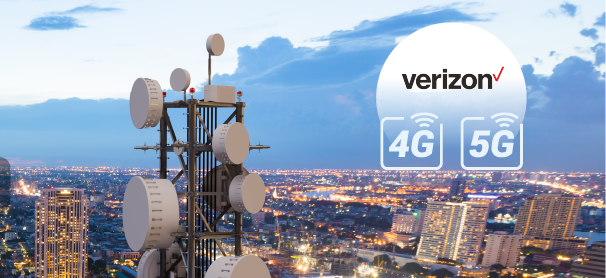
Verizon Certification
Are you looking to connect your products to the Verizon network? Verizon Open Developer Initiative Certification ensures interoperability and seamless connectivity with Verizon’s infrastructure. While not mandatory, this certification is prudent for companies aiming to achieve total compliance and compatibility with global mobile device standards. At 360Compliance, we specialize in guiding you through the Verizon certification process, from pre-certification to market launch, ensuring a smooth and efficient journey to certification and market entry. Let us help you navigate the complexities and achieve Verizon certification with ease. What is Verizon Certification? Verizon Open Developer Initiative Certification allows products to connect to the Verizon operator network. While Verizon certification isn’t mandatory, most companies understand that to ensure interoperability, getting your mobile device certified is always prudent. Industry standards span the globe regarding mobile devices, and getting Verizon certification for it is a step to total compliance and compatibility. Verizon Certification Process The procedure for obtaining a Verizon certificate includes several stages and several obligatory tasks: Pre-certification stage: sending information about the device to the M2M business team, submitting an application and technical documents to the testing laboratory where Verizon certification will occur, assigning the necessary tests, and developing a certification schedule. Certification stage: testing the device in the live network mode by one of the testing labs, checking the compliance, and issuing a certificate. Go-to-market stage: promoting the product by including the certified device in the Verizon Wireless sales channels for faster consumer access. Who are Verizon Certification Services for? Our clients range from tech companies developing new products to independent engineers, and even programmers. The reason our clients come to us is that we specialize in Verizon testing. We cut through all red tape using our simplified and meticulous process. Our ability to foresee any stalls and roadblocks allows our clients to focus on rolling out their devices. Offering unmatched convenience, impeccable service, and a keen eye for detail, we ensure a seamless experience. Why Choose 360Compliance for Verizon Certification? The certification process can be daunting and complex, especially for startups or small companies. That's where we come in. At 360Compliance, certification is our business, and you’re in good hands. We ensure your device and products meet all current industry standards and deliver Verizon certification as soon as possible. Let us take the guesswork out of certification for you, so you can focus on what you do best-developing innovative products. Would you be able to register our Device for Verizon Certification? Yes, after our initial consultation, we immediately register your device in Verizon’s database. This is the first critical step to Verizon testing. The paperwork required can, at times, seem confusing for the novice. Thankfully, we’ve helped clients time and time again with the registration process. How Do You Help With Device Submission? Submitting your device is more involved than simply sending in a picture. All documents have to be square to be able to proceed to certification. A user guide must be created that is clear, concise, and to industry standards. Also, a quick reference document must be developed. Finally, any troubleshooting guides need to be delivered as well to proceed to certification. We ensure no stone is left unturned during this process. Can You Help Speed Up The Process? In short, yes. This is the main reason a company would hire us. We’ve made many successful submissions for Verizon certification and will continue to do so. 360 Compliance has in-depth knowledge of the Verizon modules, which allows us to fast-track the certification process. Also, our ability to submit the rights documents with the correct information ensures no speed bumps on the road for the device certification. What is the Process on Verizon's End? Verizon submits your sample to a 3rd party lab before proceeding with certification. This means that to ensure the certification process doesn’t come with setbacks, you need to know what will satisfy the 3rd party lab. At 360 compliance, we’re able to submit the necessary materials to get your certification completed the first time. When Verizon Testing is Complete? Once the testing and approvals are out of the way, all there is left to do is wait for your Open Development Certification Letter. This letter enables you to run your device on Verizon wireless networks. Our offer: 360Compliance provides regulatory Testing & Certification services for hundreds of Hi-Tech manufacturers annually > partial list: https://360compliance.co/customers/ PRICES – FIXED COSTS FROM START TO CERTIFICATE Time Frame – the Faster TTM turnaround Full project management turnkey. Technical Support – Pretesting and debugging Testing & Certification – CE marking, FCC, UL-STD, MiC-Japan, ACMA-Australia, NOM-Mexico, Anatel-Brazil…. Global Market Access – Covering ~ 195 countries Feel free to contact 360Compliance experts to provide you with initial free-of-charge consulting to assist you in defining the right strategic approach with the faster TTM and the most cost-effective solution. Contact us to get Verizon Certification.
Learn more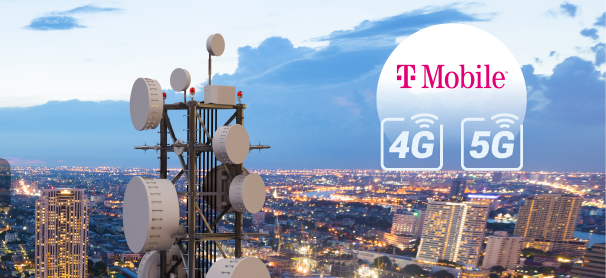
T-Mobile Certification
Are you aiming to get your device certified to operate flawlessly on the T-Mobile network? Understanding T-Mobile certification is crucial for ensuring your device meets the highest compatibility and performance standards. T-Mobile device certification verifies that cellular phones and other devices comply with T-Mobile’s network requirements, optimizing their functionality for seamless operation. But what makes this certification process essential, and how can you navigate it effectively? With guidance from 360Compliance, you can ensure your devices meet all necessary standards, making the certification process smoother and more efficient. Discover how achieving T-Mobile certification can set your devices up for success on one of the leading networks. What Is T-Mobile Certification? T-Mobile device certification is a procedure that verifies cellular phones are compliant with the T-Mobile network and operating at maximum intensity. For gadgets designed for use on the T-Mobile system, OEMs/ODMs must obtain T-Mobile product certification. T-Mobile must certify any device using their Narrowband infrastructure. As the OEM/Product Manufacturer, you must provide T-Mobile with data on device capabilities. Why is T-Mobile Testing Important? T-Mobile device certification is essential for several reasons: Ensures compatibility: It guarantees that your device will work seamlessly on the T-Mobile network, preventing issues like dropped calls, slow data speeds, or inability to connect to certain features. Optimizes performance: Certified devices undergo testing and tuning to function optimally on T-Mobile's network, improving battery life, call quality, and data speeds. Protects the network: Certification helps to ensure that devices do not harm the T-Mobile network or interfere with other users' experience. What Devices Require T-Mobile Certification? Any cellular device intended for use on the T-Mobile network, including: IoT Devices: From wearables and smart home gadgets to industrial sensors and connected vehicles, all require T-Mobile Certification for reliable network access. Mobile Smartphones and Tablets: Ensuring seamless voice, data, and messaging experiences for consumers on T-Mobile's network. Mobile Broadband Devices: MiFi hotspots and other mobile internet devices must be certified for optimal performance on the go. The T-Mobile Certification Process The T-Mobile certification process involves several key steps: Pre-Certification Consultation: Discuss your device specifications and intended use with T-Mobile's technical experts to determine the appropriate certification requirements. Testing and Validation: Submit your device for a series of comprehensive tests covering functionality, security, radio performance, and network impact. Certification Review: After the testing, T-Mobile reviews the results and grants certification only if all requirements are satisfied. What Do You Need to Know About T-Mobile Certificate? The certification standards of the carrier are highly specific and detailed. They usually feature distinct characteristics to each network, even though they also conform to standard requirements. Each carrier has unique specifications that must be met before using a device on their system. Some cellular carriers prioritize obtaining PTCRB certification over TIS; others involve extra validation for LTE networks, and several depend on FCC conformance for RSE verification while others do not. Design engineers must have the most up-to-date data on every carrier's criteria. T-Mobile is mainly concerned with the PTCRB certificate. TIS/TRP is not presently applied. PTCRB testing is performed on all enabled phone channels, regardless of carrier usage. T-Mobile utilizes substantially unique channels compared to most North American GSM providers, which can be misleading when testing on the 850MHz band, which T-Mobile is not using. Why Choose 360Compliance For T-Mobile Testing? 360Compliance offers an initial, free-of-charge consultation to guide you in defining the right strategic approach. Partner with us for a faster Time-To-Market (TTM) and the most cost-effective solutions, ensuring your device is T-Mobile Device Certified with precision. Contact 360Compliance for a consultation and set your device on the path to seamless integration with the T-Mobile network.
Learn more
5G Testing and Certification
Are you developing innovative products that rely on cutting-edge wireless connectivity? 5G technology is crucial for enabling self-driving cars, the Internet of Things (IoT), VR/AR, and more, offering numerous advantages over 4G, including faster data transfer, higher download speeds, and increased capacity. To fully leverage the revolutionary potential of 5G, ensuring compliance through rigorous testing and certification is essential. 360Compliance provides comprehensive 5G device testing services, ensuring your products meet international, regional, and national standards, facilitating a smooth market entry and contributing to the advancement of technology across various industries. What is 5G? New innovative products and technologies such as self-driving cars, the Internet of Things (IoT), VR/AP, etc. require better wireless connectivity. 5G technology makes them a reality because this generation of mobile communication has many advantages over 4G: More stable connection and transfer of data; The higher download speed that is almost 100 times faster than 4g and reaches several Gbps; Increased capacity for a single bandwidth that ensures the connection of more equipment and devices simultaneously This wireless technology allows you to accelerate automation processes, implement AI in workflows, create intelligent factories, and more. Why is 5G Compliance Testing Essential for Your Business? The impact of the 5th generation mobile network on the economy and communication will be more revolutionary than any previous generation of mobile communications. Although new devices based on this technology already provide tangible benefits, the potential of this communication type will be fully revealed in the next decade. At the same time, their offer on the global market requires testing 5G and certification confirming compliance with the current international, regional, and national regulations. Market Requirements For the 5th generation mobile ecosystem to become a reality, more work needs to be done at the level of governmental agencies. Additional frequency bands are required to ensure uninterrupted network operation. Currently, high-speed broadband access is proposed through the use of mmWave technology. These radio waves include the 24 GHz ‒ 100 GHz spectrum. However, using such technology has some challenges. Proximity to the transmitter tower is necessary as the signal can be easily blocked. 5G Wireless Testing and Certification If you want to provide goods or services in any segment of the economy based on this revolutionary technology, you need to pass 5G testing and certification. Wireless devices must undergo evaluation to ensure their safety and environmental neutrality for the people using them. Obtaining a certificate confirming compliance with international standards will make it easier and hassle-free to transport your products to the global market. To pass 5G tests, you need to evaluate your products according to the following indicators: Radiofrequency (RF) Electromagnetic compatibility (EMC) Specific absorption rate (SAR) Quality of service (QoS), and others Industries The wide opportunities provided by 5G contribute to the introduction of innovations in all spheres of human life. In particular, among the leaders in the use of Fifth-generation wireless products are the following industries: Medicine Automotive Urban planning Enterprises VR/AR Industry Household appliances IoT products, and many others Why Choose 360Compliance for 5G Device Testing? 5G compliance testing requires verification of compliance not only with international but also with national standards. 360Compliance team has extensive experience in certifying wired and wireless radio electronic devices for markets in over 195 countries. In addition, we have all permits and licenses for the full cycle certification — from the acceptance and consideration of applications to the examination and issuance of certificates. We will evaluate your products through our network of laboratories. Therefore, when you turn to us for a 5G test, you get a fast, professional, and comprehensive service that will save you from unnecessary fuss and red tape. As technology enthusiasts, we strive to ease the way to consumers for products that accelerate progress and empower humanity such as 5th generation-enabled devices. Call us to start your journey to the market!
Learn more
AT&T Certification
Are you looking to launch your telecommunications or wireless devices in the U.S. market? Does the complexity of meeting AT&T’s certification standards seem daunting? At 360Compliance, we understand the intricacies involved in obtaining AT&T certification and are here to simplify the process for you. What is AT&T Certification? AT&T Certification is a rigorous testing and approval process that verifies whether your device meets specific technical and performance standards. This ensures that your device: Operates seamlessly on the AT&T network: This includes compatibility with various network technologies like LTE and 5G, ensuring reliable data and voice transmission. Complies with industry regulations: AT&T Certification verifies compliance with relevant national and international standards, guaranteeing safety and security for users and the network. Delivers optimal performance: Through rigorous testing, AT&T Certification ensures your device meets specific performance benchmarks for factors like battery life, signal strength, and call quality. Which products need AT&T Certification? Any device that transmits data or voice over the AT&T network requires AT&T Certification. This includes: Mobile phones and tablets: Smartphones, basic phones, and tablets all need certification to function on the AT&T network. Internet of Things (IoT) devices: Wearables, connected home devices, and other IoT devices require certification for secure and reliable communication. M2M devices: Machine-to-machine devices that communicate with each other through the network need AT&T device Certification. How to obtain AT&T Certificate? Self-service: This option provides pre-negotiated costs and facilities for PTCRB (PCS Type Certification Review Board) inspection. It's suitable for devices with pre-certified components and a straightforward market launch plan. AT&T Expert Solutions: This comprehensive solution offers hands-on technical support throughout the certification process. It's ideal for complex devices, multi-region launches, or tight market deadlines. Both pathways involve the following steps: Develop a product launch plan: This plan outlines device specifications, objectives, key decision points, and monitoring requirements. Stay updated on regulations: AT&T provides guidance on relevant national and international regulations, including renewal requirements and deadlines. Manage regulatory clearances: AT&T assists with navigating complex clearance procedures for various countries, regulatory agencies, and telecom carriers. Complete testing and validation: Devices undergo rigorous testing to ensure compliance with technical and performance standards. Receive certification: Once all requirements are met, AT&T issues an official certificate for your device. What are the benefits of AT&T Certificate? The introduction of approved wireless components and chipsets which manage data and voice transfers is the most important element of device and network innovation. The variety of choices offered can be confusing, but AT&T is here to assist you. AT&T Certificate Features With AT&T gadget performance analysis and product verification, you can increase your gadget popularity rating, simplify procedures, and minimize costs, implementation issues, and product release duration. Begin with a plan for your product’s release, which sets out all connections, gathers objectives, and identifies critical decision points and monitoring specifications. Ensures up-to-date data on national and institutional accreditation and renewal needs, including methods and deadlines. Manage the difficult clearance procedure for nations, regulatory agencies, and telecom carriers with a turnkey solution. Can substantially reduce device launching time and expenses on any mobile network. Why Choose 360Compliance for AT&T Certification? Navigating the certification landscape can be challenging without the right expertise. Here’s how 360Compliance can assist you: Expert Guidance: Our team has extensive knowledge of AT&T’s certification requirements and procedures. We guide you through every step, from initial application to final approval. Testing and Documentation: We manage all aspects of testing and documentation required for AT&T certification. Speed and Efficiency: We prioritize your time-to-market by streamlining the certification process. Our efficient approach helps reduce delays, allowing you to launch your products faster. Customized Solutions: Whether you are certifying a new device or updating an existing product, we offer tailored solutions to meet your specific needs. Contact us today to learn how we can help you achieve AT&T certification and bring your devices to market faster and with greater assurance.
Learn more
FirstNet Testing
Have you ever wondered how your telecommunication devices can meet the critical communication needs of first responders? Achieving FirstNet certification is vital to ensuring your devices are reliable, secure, and capable of operating on the First Responder Network Authority (FirstNet) network. But how do you navigate the complexities of this certification process? That’s where 360Compliance comes in. Our expert team simplifies the journey, providing comprehensive services to help you quickly achieve FirstNet certification. From rigorous lab and field testing to stringent security validations, 360Compliance ensures your devices meet all necessary standards, making the certification process faster, easier, and more cost-effective. What is FirstNet Certification? FirstNet certification refers to obtaining approval and recognition for telecommunication devices, applications, and services to operate on the First Responder Network Authority (FirstNet) network. FirstNet is a dedicated and secure wireless broadband network designed to meet the unique communication needs of first responders in the United States. Types of FirstNet Device Certification There are three main types of FirstNet certification, each catering to different needs: FirstNet Ready: These devices work seamlessly on the FirstNet network with an AT&T SIM card, offering HPA and Band 14. Examples include smartphones, tablets, and laptops. FirstNet Trusted: Designed for Internet of Things (IoT) devices like sensors and cameras, these devices undergo additional security testing and meet stringent cybersecurity standards. FirstNet Capable: These devices may require additional configuration or unlocking to access FirstNet features, including HPA and Band 14. How to Obtain FirstNet Certification? The process for obtaining FirstNet certification varies depending on the type of device. Here's a general overview: Device compatibility: Ensure your device meets the technical specifications and functionalities required for FirstNet. Lab testing: Submit your device for rigorous testing at an authorized AT&T facility. This tests performance, security, and network compatibility. Field testing: Conduct field tests with a third-party provider to validate real-world performance and functionality. Security validation: Meet stringent security requirements to protect sensitive data and prevent cyberattacks. Mission-critical application testing: Ensure compatibility with specific mission-critical applications used by first responders. Certification: Once all tests and validations are successful, your device will receive the appropriate FirstNet designation (Ready, Trusted, or Capable). What Devices Support FirstNet? A robust and growing list of devices holds the coveted FirstNet badge, encompassing smartphones, tablets, laptops, wearables, and even Internet of Things (IoT) equipment. You can find a comprehensive list on the FirstNet website. Benefits of Using Certified Devices Using FirstNet-certified devices offers several advantages for first responders: Certified devices undergo rigorous testing to ensure flawless performance on the FirstNet network, even under extreme conditions. This means first responders can count on their equipment when it matters most. Enhanced Security: FirstNet Trusted devices provide extra protection for sensitive data, keeping critical information safe from unauthorized access. Priority Access: Certified devices benefit from HPA, ensuring their data gets prioritized over civilian traffic during emergencies. This can be crucial for coordinating response efforts and saving lives. Are AT&T and FirstNet the Same? While AT&T operates the FirstNet network, they are distinct entities. FirstNet is an independent authority governed by the First Responder Network Authority, a federal agency responsible for overseeing the network's development and deployment. AT&T provides the infrastructure and services but ultimately serves as a contractor for FirstNet Authority. Why Choose 360Compliance For FirstNet Device Certification? To ensure your devices are compatible with the critical FirstNet network, you need a partner who understands the complexities and can navigate the process seamlessly. That's where 360Compliance comes in. We offer a comprehensive package of services that takes the hassle out of FirstNet device certification, making it faster, easier, and more cost-effective. Choosing 360Compliance for FirstNet device certification offers a comprehensive and streamlined solution for regulatory approvals. Contact 360Compliance for expert guidance and support.
Learn moreKey Components of Cellular Testing
Interoperability:
- Cellular testing ensures that mobile devices can seamlessly connect and communicate with various networks and infrastructure. This is vital for users who may switch between different carriers or travel internationally, as their devices need to function reliably across diverse network environments.
Compliance with Standards:
- Cellular technologies adhere to established standards set by organizations such as the International Telecommunication Union (ITU), 3rd Generation Partnership Project (3GPP), and Global Certification Forum (GCF). Certification ensures that devices comply with these standards, promoting consistency and compatibility across the industry.
Network Compatibility:
- Certification ensures that mobile devices are compatible with specific generations of cellular networks, such as 2G (GSM), 3G (UMTS), 4G (LTE), and the latest 5G technologies. This compatibility is essential for optimal performance and takes into account factors like data speed, latency, and network efficiency.
A Step-by-Step Guide to Cellular Certification
The cellular certification process is a comprehensive evaluation that mobile devices undergo to ensure compliance with industry standards and regulations. The process includes:
Pre-Certification Assessment:
- Manufacturers begin the process by conducting an internal evaluation of the device’s hardware, software, and overall design to identify potential issues.
Submission of Documentation:
- Manufacturers must compile and submit detailed documentation outlining the device’s specifications, features, and technical aspects.
- This documentation typically includes information about the device’s hardware components, software architecture, security features, and network compatibility.
Laboratory Testing:
- Rigorous testing for network compatibility, data transmission, voice quality, multimedia performance, and security features.
Network Simulation:
- Devices undergo testing in simulated network environments to evaluate their performance under various network conditions, such as low signal strength or high network traffic.
Interoperability Testing:
- Evaluation of device compatibility with various networks, applications, and services.
Security and Compliance Checks:
- The certification process includes a thorough examination of the device’s security features to ensure compliance with industry standards and regulations.
- Regulatory compliance checks, including safety standards and electromagnetic compatibility, are conducted to meet legal and environmental requirements.
Certification Issuance:
- Awarding of certification upon successful completion of all tests.
Post-Certification Support:
- Manufacturers may need to provide ongoing support, addressing any issues that may arise after certification.
- This stage involves collaborating with regulatory bodies and network operators to address updates, patches, or new standards that may impact the certified device.
Benefits of Cellular Certification
Cellular mobile device certification offers a multitude of benefits for both manufacturers and users:
- Guaranteed Compatibility: Devices that are certified work seamlessly with the network, ensuring reliable and consistent connectivity.
- Improved User Experience: Users benefit from better call quality, faster data speeds, and a more stable overall mobile experience.
- Reduced Costs: Manufacturers can save time and money by ensuring their devices are certified before launch, avoiding costly rework or delays.
- Enhanced Safety: Cellular phone certification ensures devices comply with safety regulations, protecting users and the network infrastructure.
Why Choose 360Compliance for Your Cellular Testing Needs?
When it comes to cellular testing, 360Compliance stands out as your trusted partner. Our team brings extensive experience in certifying electronic devices for markets spanning over 195 countries. With all the necessary permits and licenses for end-to-end certification, we offer fixed costs from start to certificate, ensuring transparency in pricing. Connect with 360Compliance experts for an initial, free-of-charge consultation, guiding you towards the right strategic approach for a faster time-to-market and a cost-effective solution.
Additional Resources:
Other Certifications
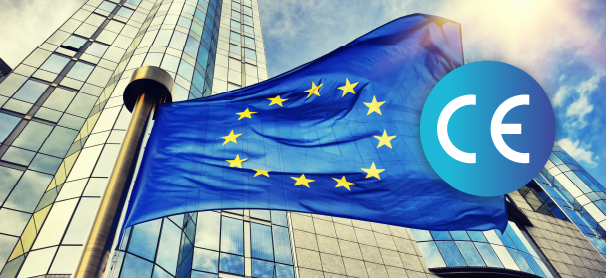
CE Certification
Why is CE Certification Important? CE certification confirms that the product entered the market legally, has all the permits, and does not pose any threat to human health or the safety and integrity of the environment. Thus, the CE mark signals both buyers and official regulators about the successful completion of all testing and certifying procedures. What Countries Require CE Marking? The mandatory CE certification applies to products entering the market of all 30 countries of the European Economic Area (EEA). It also covers Switzerland and Turkey, the United Kingdom, which have signed a number of bilateral agreements with the EU, including the CE marking requirement. Additionally, the UK indefinitely recognizes the EU's CE mark for various manufactured goods placed on the UK market. What Products Need a CE Certification? To determine whether a product requires CE Certification, manufacturers should consult the relevant EU directives and harmonized standards. Notified bodies, independent organizations authorized to assess product compliance with EU directives, can also provide guidance. Product Category Examples Electrical equipment Household appliances, power tools, lighting, cables Toys Dolls, action figures, toy cars, construction sets Machinery Industrial machinery, agricultural machinery, construction machinery Medical devices Surgical instruments, implants, diagnostic equipment Construction products Cement, steel, windows, doors Personal protective equipment Safety helmets, goggles, gloves, boots Pressure equipment Gas cylinders, boilers, pressure cookers Gas appliances Cookers, heaters, gas water heaters Aerosols Spray paint, deodorants, insecticides Telecommunications equipment Mobile phones, routers, modems Radio equipment Radios, televisions, Bluetooth devices Lifts Escalators, elevators, dumbwaiters Explosive devices Fireworks, detonators, ammunition What Products Do Not Require a CE Marking? Not all products imported into the listed countries require CE marking certification. In particular, goods belonging to the following categories, which are covered by other Directives, are subject to a different type of certification: Chemical products Cosmetics Food products Pharmaceuticals How to Obtain CE Certification? Obtaining a CE certificate involves a systematic process: Identify Applicable Directives The Directives include general safety requirements for products placed on the market. The specific parameters and technical requirements are detailed in the harmonized standards. If a product does not fall under any Directives requiring CE marking, it must still comply with a document outlining general safety requirements. Directive Number Product Category 2014/35/EU Low Voltage Directive (LVD) 2014/30/EU Electromagnetic Compatibility (EMC) 2011/65/EU Restriction of Hazardous Substances (RoHS) 2014/53/EU Radio Equipment 2014/34/EU Equipment and Protective Systems for Use in Explosive Atmospheres (ATEX) Regulation (EU) 2017/745 Medical Devices Regulation (EU) No 305/2011 Construction Products 2006/42/EC Machinery Regulation (EU) 2016/425 Personal Protective Equipment 2014/31/EU Non-automatic Weighing Instruments Regulation (EU) 2016/426 Appliances Burning Gaseous Fuels 2014/28/EU Explosives for Civil Uses 90/385/EEC Active Implantable Medical Devices 98/79/EC In Vitro Diagnostic Medical Devices 2014/90/EU Marine Equipment Directive 2013/53/EU Recreational Craft 2014/33/EU Lifts 2014/68/EU Pressure Equipment Regulation (EU) 2016/424 Cableway Installations to Carry Persons 2014/32/EU Measuring Instruments 2013/29/EU Pyrotechnic Articles Full list of CE directives you can find here Identify the requirements for the product Each Directive specifies essential requirements that a product must meet. To demonstrate conformity, manufacturers must identify applicable 'harmonized European Norms' (hENs), which are standards that offer a presumption of conformity to the essential requirements. These standards vary depending on the product's classification and intended use. Harmonized standards, available on the European Commission’s website, simplify compliance through clear frameworks. Determine if third-party assessment is needed Certain directives may require third-party assessment by a Notified Body (NB), an organization authorized by European authorities. For example, the Medical Devices directive and others mandate the use of an NB. However, the EU has reduced the number of products requiring NB assessment, placing more responsibility on manufacturers. Assess Product Conformity Conduct a thorough assessment of your product to ensure it conforms to the essential requirements outlined in the relevant directives. This step may involve testing and verification processes to demonstrate that your product meets the necessary safety and environmental standards. Compile a Technical File Create a comprehensive technical file that documents every aspect of your product's design, development, and manufacturing process. This technical file, also known as the Technical Construction File, should include technical descriptions, drawings, circuit diagrams, bills of materials, specifications, test reports, and other relevant information. The file serves as evidence of conformity and must be maintained for up to 10 years after the last unit is manufactured. Make a Declaration And Affix The CE Mark When satisfied that the product conforms to the applicable CE Marking Directives, the manufacturer must complete a Declaration of Conformity. It includes information about the product, directives, standards applied, and the responsible party in the company. Following this, affix the CE mark visibly on the product, signaling compliance with EU standards. This is the final stage, after which the product may be launched to the EU and EEA markets. Responsibility of Manufacturers for CE Certification To complete the standard procedure for obtaining the CE mark, manufacturers must find out which EU Directive regulates the access of products of their category to the market and check compliance with all regulations. After that, a conformity assessment is carried out, based on which a technical file is prepared. Further, the EU-authorized body examines the documents, and the manufacturer issues the EC Declaration of Conformity (DoC). When all documents are certified and the CE mark is received, the manufacturer can label with this mark their products and packaging. Responsibility of Distributors for Products with a CE Mark Distributors of goods in the EU market must ensure that the CE conformity mark has not yet expired and that the certificate itself is not fake. They also check the placement of the stamp on the product or its packaging since marking is the responsibility of the manufacturer. What Are the Benefits of CE Certification? There are several advantages to CE certification, including: Free movement of goods within the EEA Allows manufacturers to freely circulate their products within the EEA without facing additional technical barriers to trade. Increased market access CE certification can help manufacturers gain access to new markets in the EEA, as well as in other countries that recognize the EC marking. Enhanced product safety Helps to ensure that products meet high standards of safety and environmental protection. Improved consumer confidence CE certification indicates independent compliance with EU safety requirements, boosting consumer confidence. Become CE Certified with 360Compliance The CE marking procedure can be tedious and incomprehensible to non-professionals. However, the 360Compliance team will help you pass all stages of certification quickly, competently, and successfully. You will receive full project management with no hassle. You are also guaranteed technical support and a transparent pricing policy. To start the testing & certification process for obtaining a CE stamp, contact the 360Compliance team in any convenient way and get all the answers and instantly initiate the certification procedure. Frequently Asked Questions About CE Marking For How Long is a CE Certificate Valid? For each product group, a certain validity period is established, but in most cases, it is 3 years. After that, you need to go through the re-certification procedure. However, there are products for which the CE label is valid for 10 years or more. What are the Penalties for the Absence of a CE Compliance Certificate? Punishment for selling goods without the certificates in countries where the CE marking is mandatory varies widely from administrative to criminal liability. The specific article of the law that will be applied depends on the damage that a given product can cause to people or the environment. How to Get a CE Certificate? To obtain the CE stamp, it is necessary to go through a risk assessment procedure for the products offered. For this, you need to study the standards of the specific Directive that regulates access to the market for this type of products, make up a technical file, and pass testing. When all permits are issued, CE marking can be applied to the offered products. How to Authenticate a CE Certificate? You can authenticate a CE label using the official database. Also, it is possible to contact the official authority that issued the certificate and request details on this product. If it turns out that this product is not registered with official institutions, you are dealing with fake certification.
Learn more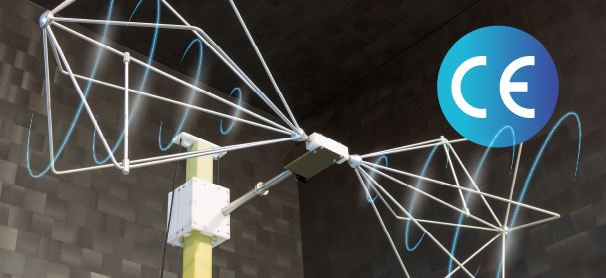
EMC Directive 2014/30/EU
Do you manufacture or sell electrical or electronic equipment in the European Union (EU)? If so, you'll need to ensure your products comply with the Electromagnetic Compatibility (EMC) Directive 2014/30/EU. Wondering how you can streamline the compliance process to ensure your products meet the EU's stringent electromagnetic compatibility requirements? 360 Compliance is here to guide you through every step, ensuring your products not only comply but thrive in the European market. What is CE EMC Certification? CE EMC Certification is a mark that indicates a product's compliance with Electromagnetic Compatibility (EMC) requirements in the European Union. EMC is crucial because electronic devices emit electromagnetic waves during operation, and without proper EMC measures, these emissions can lead to Electromagnetic Interference (EMI). The CE mark, which stands for Conformité Européenne, is a mandatory certification for products sold within the European Economic Area (EEA). It signifies that a product meets the essential EMC standards set by the European Union to ensure that it won't cause or be susceptible to electromagnetic interference. This interference could affect the proper functioning of other nearby electronic devices. The certification process is guided by Directive 2014/30/EU, which outlines the specific EMC requirements that products must meet to obtain the CE mark. This directive establishes the legal framework for electromagnetic compatibility and mandates that manufacturers thoroughly test their products for compliance. The goal is to guarantee that electronic devices can coexist harmoniously in the European market without causing disruption or compromise in functionality. Which Products Need the CE EMC Mark? If your product falls into the category of devices that can emit electromagnetic waves during operation, it likely requires the CE EMC mark. Here are some examples of products that typically need this certification: Electrical Appliances: Household appliances such as washing machines, refrigerators, and microwave. Information Technology Equipment: Computers, laptops, servers, and networking equipment. Consumer Electronics: This includes a broad range of devices like televisions, audio equipment, and gaming consoles. Medical Devices: Equipment used in the medical field, such as diagnostic machines and monitoring devices. Telecommunications Equipment: Phones, routers, and other communication devices. Industrial Machinery: Various types of machinery used in industrial settings, like manufacturing equipment and automation systems. Lighting Products: From simple light bulbs to complex lighting systems. Electronic Toys: Children's toys that incorporate electronic components or emit electromagnetic signals during play. Why is EMC Directive Important? Ensuring Market Access: Legal Compliance: CE EMC Certification is a legal requirement for placing products in the EU market. Non-compliance can result in serious consequences, including fines and withdrawal of products from the market. Enhanced Market Credibility: Products with CE EMC Certification signal adherence to high-quality standards, enhancing your brand's credibility and customer trust. Quality Assurance: Product Reliability: EMC Certification ensures that your products can function in the presence of electromagnetic disturbances, making them more reliable. Reduced Interference: Certification reduces the risk of your products causing interference with other electronic devices, preventing potential issues for end-users. How to Get CE EMC Certification? Step-by-Step Guidance: Consultation: Initiate the process with a consultation to understand your product and specific certification needs. Pre-assessment: Identify potential EMC issues and address them before formal testing to expedite the certification process. Testing and Evaluation: Utilize our accredited laboratories for comprehensive emissions and immunity testing. Documentation Support: Our team assists in preparing the necessary technical documentation required for certification. Declaration of Conformity: Once certified, we help you issue the Declaration of Conformity and affix the CE mark to your product. How long will testing take? The EMC CE certification procedure takes 4 to 6 weeks on average. If the product belongs to an industry that is regulated by other directives (e.g. CE RED), it is subject to additional tests, which increases the time required. Manufacturer's Responsibilities Related to EMC CE Certification The company that develops a product shall design it according to EMC CE norms and confirm compliance with the norms by independent laboratory tests. It is also required to: indicate the actual electromagnetic radiation level in the documentation; warn about the possible hazards associated with the use of the device; provide the user with operating instructions; indicate geographical restrictions on the use of the product, if any; keep a register of complaints; store certificates and declarations of conformity for at least 10 years; cooperate with local authorities and provide product samples to the authorities. Quick and Easy EMC CE Certification with 360Compliance Obtaining CE EMC Certification is not just a regulatory obligation; it is a strategic move to ensure your products' quality, compliance, and market competitiveness. By investing in certification, your business can access new markets, build trust with customers, and stay ahead in the dynamic world of electronics. At 360Compliance, we simplify the process, offering expert guidance and tailored solutions to ensure your products meet the highest standards of electromagnetic compatibility. Contact us to get transparent pricing, clear timelines, and technical support at all stages of the procedure.
Learn more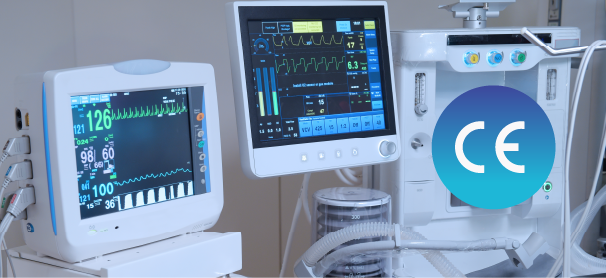
CE Mark Medical Device
Do you manufacture or plan to sell medical devices in the European Union (EU)? If so, obtaining CE marking for medical devices is essential for legal market access. This signifies compliance with the Medical Devices Regulation (MDR) 2017/745. Looking for a partner to demystify the CE marking process and ensure your medical devices comply with EU regulations? At 360Compliance, we're here to provide guidance and support to address any questions you may have. What is CE MD Certification? CE MD certification is a mandatory requirement for all medical devices that are sold in the European Union. The CE mark is a symbol that indicates that a product has met all of the applicable EU directives and regulations. To obtain CE marking for medical devices, manufacturers must adhere to the regulatory framework outlined in the Medical Devices Regulation (MDR) or the In Vitro Diagnostic Regulation (IVDR). The primary objective of CE approval for medical devices is to ensure the safety, effectiveness, and alignment with the needs of patients and healthcare professionals. The process is regulated by EU Directive 2017/745 and relevant industry regulations, including 90/385/EEC, 93/42/EEC, 98/79/EC, and 722/2012. Which Products Require MDR CE Marking? CE MD marking is mandatory for a wide range of medical devices, including but not limited to: Diagnostic Equipment; Implants; Surgical Instruments; Monitoring Devices; Dental Products; Rehabilitation Equipment. Manufacturers must ensure their products align with specific classifications and requirements outlined in the applicable directives. Which products do not need the CE mark medical device? CE medical device certification is unnecessary if the product does not meet the definition of a medical device outlined in EU Directive 2017/745 (MDR). In that case, other industry regulations, like those governing radio frequency or electromagnetic radiation, are applicable. Additionally, products can be sold without a CE certificate if alternative standards have been set for them, as seen with medicines, food products, cosmetics, and chemicals. CE Certification Process for Medical Devices The CE certification process for medical devices involves several key steps: Legal Requirement CE marking is mandatory for medical devices under the EU Medical Devices Regulation (MDR) or the In Vitro Diagnostic Medical Devices Regulation (IVDR), depending on the nature of the product. Conformity Assessment To obtain CE marking, manufacturers must undergo a conformity assessment, which involves demonstrating that the medical device complies with the relevant essential requirements and standards. Particularly the IEC 60601 series, which specifically addresses the safety and essential performance of medical electrical equipment. Classification of Devices Classifying devices involves categorizing medical devices into different classes based on their risk level. The classification determines the conformity assessment procedure that the manufacturer must follow. Technical Documentation Manufacturers must create and maintain technical documentation supporting the conformity of the medical device. This documentation should cover aspects such as design, manufacturing, risk assessment, and labeling. Notified Bodies In many cases, a Notified Body, an independent third-party organization, is involved in the conformity assessment process. The Notified Body assesses the technical documentation and issues a certificate if the requirements are met. Post-Market Surveillance CE marking is not a one-time event. Manufacturers must continue to monitor their products after they enter the market. Post-market surveillance involves tracking the device's performance, addressing any safety concerns, and updating documentation as needed. Unique Device Identification (UDI) The EU MDR and IVDR require the use of a Unique Device Identification system, allowing for traceability and improved post-market surveillance. The timeframe for issuing the certificate varies depending on the niche and the application of the device. The average time for a Class A device is 4 to 8 weeks. Clinical testing of Class B and C devices can take several months. Benefits of CE Certification for Medical Devices Market Access Achieving CE certification opens the doors to the vast European market, allowing manufacturers to distribute and sell their medical devices within the EU. Compliance with Regulations CE certification ensures that your medical device complies with the stringent regulations and standards set by the European authorities, fostering trust among healthcare professionals and end-users. Enhanced Reputation Displaying the CE mark on your medical devices demonstrates a commitment to quality and safety, enhancing your brand's reputation in the competitive healthcare industry. Risk Mitigation Compliance with CE mark medical device requirements helps mitigate legal and financial risks associated with non-compliance, ensuring that your products meet the highest safety and performance standards. Why Choose 360Compliance For CE Approval For Medical Devices? We provide a full range of CE certification services for medical devices. Our employees provide assistance with all the stages of this procedure from evaluating the legal environment and determining the class of equipment to the paperwork and cooperation with authorized bodies. We guarantee transparent prices, clear deadlines, and convenient technical support. Get your certificate quickly and with a minimum of effort by leaving an application on our website to learn more about our services!
Learn more

